The quintessence of crafts from traditional craft villages
Vietnamese craft villages have long been a symbol of culture and craftsmanship. Each product not only demonstrates the skillful craftsmanship but also contains the soul, memories and stories of the craftsman.
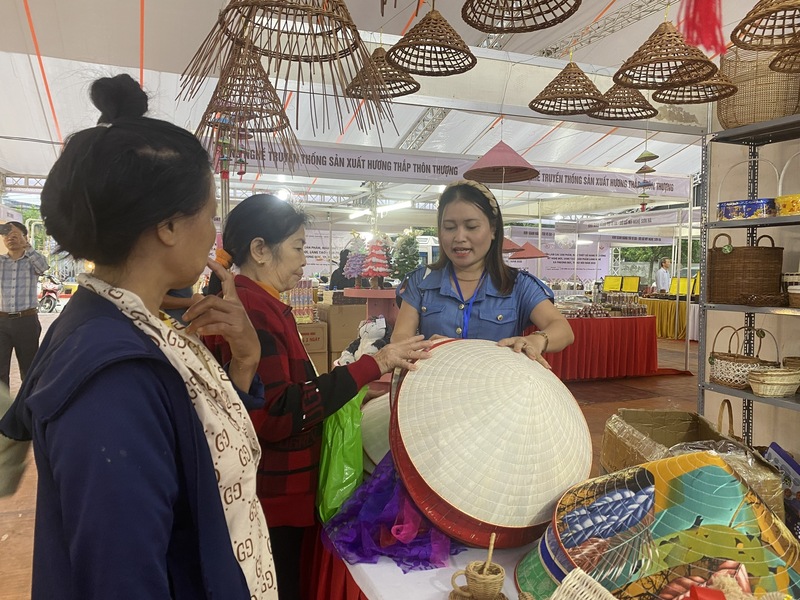
Chuong Village ( Hanoi ) is a land over 300 years old associated with the traditional craft of making conical hats. Photo: NH
At Chuong conical hat village (Hanoi), each hat is meticulously crafted from old palm leaves, dried in the dew, dried in the sun and pressed smoothly, skillfully stacked on a bamboo frame, and sewn with thin fishing line. Talking to a reporter from Cong Thuong Newspaper, artisan Le Van Tuy shared that making hats is a profession, a career, each hat is born like a brainchild, containing both sweat and love for the homeland.
A recent unique feature is that Chuong hats are also combined with Van Phuc silk, creating a product that is both modern and retains the traditional spirit. The “silk-coated” hats have become a highlight that is both familiar and new, loved by tourists, young people and international visitors thanks to their elegant, luxurious but still deeply Vietnamese identity.
In Phuong Duc commune (Hanoi), the to he figurines made from smooth rice flour are not only toys but also a symbol of folk art. Artisan Dang Van Hau said that the craft of making to he nurtures the soul, conveys love and cultural pride. From the images of Saint Giong, Tam Cam to modern characters, to he reflects the creativity and adaptability of the artisan.
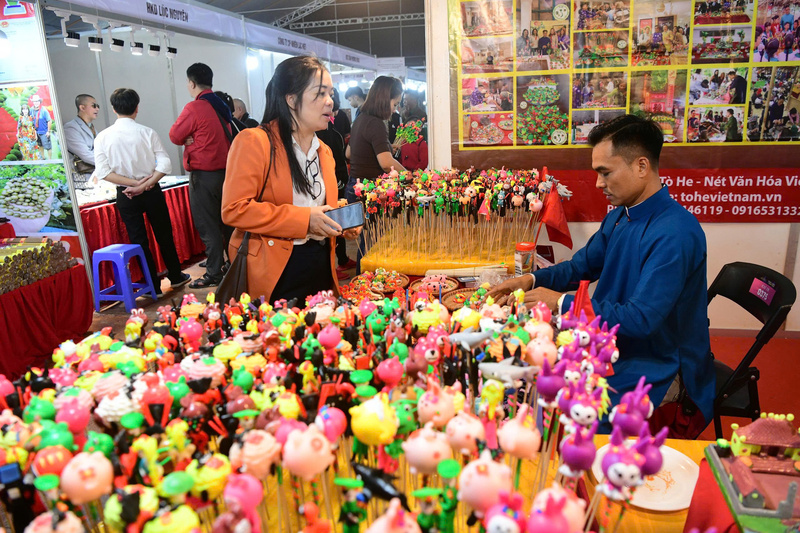
The craft of making clay figurines not only preserves traditional cultural values but also opens up new directions of development, becoming a craft village product with national identity and export value. Photo: NH
Currently, the country has about 5,400 craft villages, of which 2,000 are traditional craft villages, with 57 national intangible cultural heritages. Hanoi has 1,350 craft villages, 337 traditional occupations, accounting for nearly 90% of the total number of traditional occupations in the country, which is a great advantage for developing products associated with cultural industries.
Craft village products from ceramics, textiles, bamboo and rattan, to metal, lacquer, etc. have created jobs, increased income for hundreds of thousands of workers, and expanded export markets. Vietnamese handicrafts have reached 163 countries, including Japan, the US, and the EU, thanks to environmentally friendly products and rich cultural values.
Concerns about the risk of gradual disappearance of craft villages
However, Vietnamese craft villages are facing many challenges such as unstandardized materials, small-scale production, lack of technology, simple designs and failure to meet modern tastes. Many traditional crafts are at risk of disappearing as the younger generation is less interested, leading to a lack of successors to the sophisticated products.
Many households have not met international regulations on labor, conformity certification, and traceability, causing difficulties in exporting. At the same time, many handicraft products are processed at low prices, reducing brand value. If skills and innovation are not improved, Vietnam risks losing its advantage in sophisticated handicraft products.

Craft villages are not only heritage treasures but also important socio -economic pillars, with a total production value estimated at more than 20,000 billion VND per year.
Mr. Vu Hy Thieu, Chairman of the Advisory Board of the Handicraft Association, some traditional crafts of Vietnam are also facing the risk of extinction, such as silver engraving. Sophisticated silver engraving products like before are not many anymore, if we continue to follow the simple, cheap market, the crafts will become weaker and weaker.
“Traditional sculpture and weaving in Indonesia combines artisan skills and technology, helping to preserve traditional values while increasing productivity and product value, supporting both artisans and businesses. Meanwhile, in Vietnam, many artisans cannot be creative because it is difficult to sell their products at high prices, leading to a decline in their skills,” Mr. Vu Hy Thieu cited.
The global market is favoring handmade, environmentally friendly products with rich cultural stories. The global handicraft market is worth 753.2 billion USD, expected to increase by 10% per year. Vietnam has signed 17 FTAs, including EVFTA and RCEP, expanding opportunities to export craft village products.
At the same time, domestic demand is growing, with many people willing to pay for high-quality handmade products. The domestic market is also an opportunity for artisans to experiment and innovate without relying entirely on exports.
According to Mr. Trinh Quoc Dat, Chairman of the Vietnam Craft Villages Association, for sustainable development, it is necessary to focus on four key tasks: Improving designs, packaging, enhancing applicability; providing technical guidance, design, business management, and marketing for young artisans; providing capital, protecting intellectual property, promoting trade and connecting businesses; preserving traditional craft heritage, passing on techniques, and attaching cultural stories to products. These solutions will help Vietnamese craft villages both preserve traditional quintessence and improve product quality, meet modern market demands, and affirm their position in the international arena.
Preserving and developing craft villages is not only a cultural task but also an important economic strategy. From Chuong conical hats, Xuan La figurines to thousands of other craft village products, each work is a testament to creativity, passion and Vietnamese spirit. When properly oriented, combining domestic and export markets, Vietnamese craft villages will not only preserve traditional values but also become cultural symbols and international brands.
According to many experts, current policies for Vietnamese artisans still have many limitations. Rewards or support are mostly symbolic, 'one-time', while countries like Thailand, Indonesia, the Philippines or India invest systematically, consider artisans as "national treasures", and maintain long-term respect and support regimes.
Source: https://congthuong.vn/4-nhiem-vu-phat-trien-lang-nghe-theo-huong-thi-truong-430224.html


![[Photo] The "scars" of Da Nang's mountains and forests after storms and floods](https://vphoto.vietnam.vn/thumb/1200x675/vietnam/resource/IMAGE/2025/11/13/1762996564834_sl8-jpg.webp)




![[Photo] General Secretary To Lam visits Long Thanh International Airport Project](https://vphoto.vietnam.vn/thumb/1200x675/vietnam/resource/IMAGE/2025/11/13/1763008564398_vna-potal-tong-bi-thu-to-lam-tham-du-an-cang-hang-khong-quoc-te-long-thanh-8404600-1261-jpg.webp)
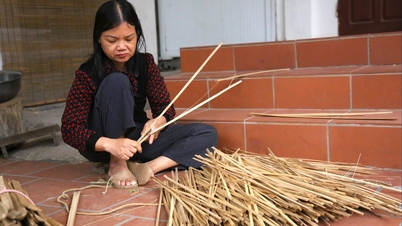



























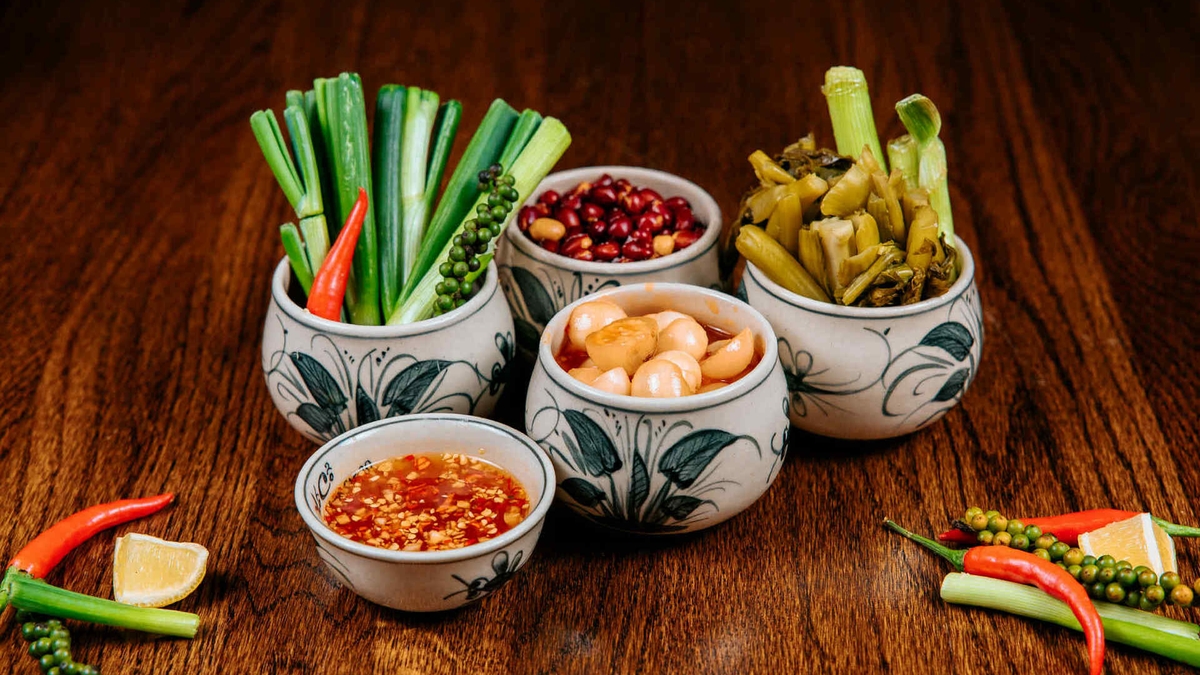
















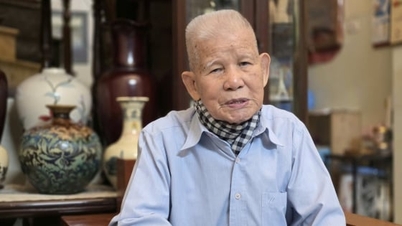















































![Dong Nai OCOP transition: [Article 3] Linking tourism with OCOP product consumption](https://vphoto.vietnam.vn/thumb/402x226/vietnam/resource/IMAGE/2025/11/10/1762739199309_1324-2740-7_n-162543_981.jpeg)






Comment (0)